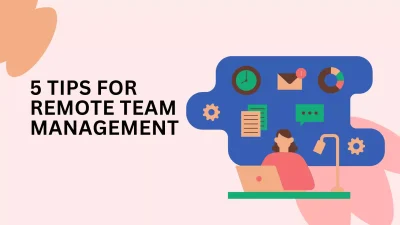You might have been hit with this question: “Can I get just the digital images?”
If you did, chances are it seemed an easy enough request that lay outside your normal sphere of business activities and cost, so it is impossible to fulfill in terms of time or money, even for peanuts.
From devaluing your art to losing control of your work, there is good reason to be wary of giving clients just digital images. To read about the Carolyn and Peter Fehilly case with accompanying commentary suggests they might consider handing over print files instead; this blog addresses some of those reasons in more detail.
The Slide in Value of All-Digital Formats
Two art forms—photography and video—have been transformed from physical media into digital shapes. For many painters and photographers working today, the concept of paper has ceased to exist; their work is simply shifted onto a computer screen for output onto a memory card.
In talking about the spreadsheet, Monet even coined a phrase that has since become a platitude: “Art can only be good financial business if it’s all-digital.”
The digital age afforded convenience, yes—but it also altered the terms of trade for photography and painting. Here’s why giving out digital images casts negative aspects onto your work:
How Digital Images Cheapen Your Value
-
When clients get a simple file, they may not understand just how much effort and expertise went into creating the whole work.
-
Unlike a paper photograph or piece of resin-canvas that has much more weight visually than does this invisible thing called a data file on your hard disk drive (the product of multiple editing passes…), clients will likely forget all the punctuated time you spent planning how to get those important shots.
-
Digital products may be less tangible than solid ones, but consumers still seem to value them more.
-
For another thing, a user pays their money and then experiences the item. They pay to hear a song or see an image, but they can touch the paper stock on which something was printed and get a smell of its ink. All this takes away from what you usually find in your pocket.
Loss of Retail Opportunities
Handing out digital images can kill chances for future income.
-
Customers who receive digital images only may choose to take their business elsewhere—either print at a discount lab or have them made into sticky-backed plastic Instagrams.
-
The copyright owner cannot seek damages if a photograph is used without permission.
-
So you drop not just that chance of offering first-class printing services, neither do you any more exert control over your work’s physical representation.
For example, wedding photographers often make photo books and suchlike products account for about 40% of their income in total.
-
High-quality stuff like albums, canvases, and deep matte prints certainly helps to provide clients with an interesting twist.
-
More importantly, this part of the product experience constitutes the above forty-plus percent.
Lack of Control Over the Quality of Your Work
If you rely totally on supplying digital images, you’re placing your reputation at the mercy of others. Here’s how this can turn out:
-
Clients go wild from being in control of the editing
When it comes to image files, many clients lack the technical knowledge and equipment that the pros have, and authorized results may not match your original vision. If these retouched images start circulating on the web or around in social circles altogether, friends of friends look at them… Well, suddenly your work could appear relatively weak, although any such flaw wasn’t caused by you. -
The printing company’s cheap standards drag down your entire brand
Image quality at printing businesses varies widely, and not all clients are aware of what an influence this has on their finished product. Images may end up suffering from poor colors, distortion, or low-quality paper. This not only affects their satisfaction but also lowers the general perception of your artistry.
Your name would be linked to a piece of work that’s of lower standard.
The Trap of Copyright Troubles
Handing out these digital images also opens doors for more complex legal challenges, such as infringement on copyright and unauthorized use.
Unlimited Usage Without Borders
-
If you don’t insert words about the rights of application in a contract and communication with the clients, there’s a huge risk that those customers will pass your digital images around, use them in any odd location, thought possible.
-
You may find your exquisitely crafted portrait on billboards, in Instagram ads, and on a corporate web page, without acknowledging approval or payment.
Digital images constitute loss of control.
-
Imagine what might happen to those photos after you turn them over to others! With just a single file copy, it can be multiplied.
-
Even if this process takes just one or two minutes, how is it possible for us in such short time periods to start defending each and every one of them?
Digital Images Alone? Try Analog Alternatives
If you seek to volunteer digital images but are also disinclined to the idea of giving things away for free, try these sustainable alternatives:
- Digital Images as Part of a Package
Rather than separate digital images, put them together with physical products such as prints and album sets.
This method allows ease of use while guaranteeing control over distribution and quality.
For example, you may deliver high-res images in a gallery, but provide a voucher for printed work through your preferred lab. - Watermarked and Low-Res Digital Previews
Give clients low-res watermarked digital previews that they can use for their social networking pages or reviews.
These are digital images that can be used for online sharing but are not sufficient to print high-quality items. - Putting Print First
Adopt a “print-first” policy where clients start their purchase with physical products.
Treat digital images as an add-on option to a physical package.
Print is an experience; a digital image feels like a commodity.
- If clients feel the need for digital images (e.g., commercial uses), then they are figured in under a signed licensing agreement.
- About various ways of making use of the digital images, avoid similar wording that may give rise to disagreements over copyright.
Into the Larger Picture
For convenience or because they don’t understand value, the reality is that many clients simply do not understand what they are asking for when they request only a digital image.
- You have to educate them yourself, guiding the client to solutions that benefit everybody involved.
- By controlling your creative output and offering alternatives like quality prints and licensed digital usage, you solidly tie your reputation to the bottom line.
Owning Your Artistic Integrity: Conclusion
Instead of selling yourself short—as “a bunch of pixels”—represent your professional worth in full service.
- That includes unparalleled quality of production in all forms.
- Your dedication to not just shaping a mere picture but also forming an experience out of life that people will remember for years is highlighted by these points.
When you control the whole process—from shooting through delivery of a polished, tangible product—it turns backward-facing customers into those who advocate in glowing terms for your artistry.



